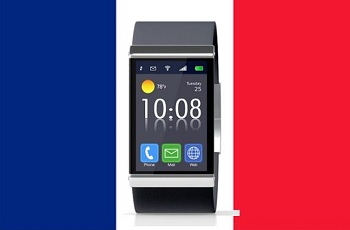These mobile devices are certainly becoming more popular, but many consumers wonder if they come with medical risks.
The last several months has represented an extremely important time for the release of various types of wearables as well as for the very beginning of consumer adoption, but as was the case with the penetration of cell phones and smartphones, consumers are now wondering if these devices will be safe for their health.
Unlike traditional smartphones, wearable technology is worn on the clothing or body all the time.
Tech companies and fashion brands, alike, have been stretching their creativity to the outer extent in the hopes of coming up with a type of wearables that would truly appeal to consumers and that they would want to be able to purchase so that they can wear them all the time. Many predictions have showed that this industry has tremendous potential, as the market will grow to about $50 billion over the next three to five years. That would represent a market increase of about ten times where it was in 2014. The release of the Apple Watch in the first quarter of 2015 expected to drive that growth quite powerfully.
Wearables may present a technology and financial opportunity, but the health consequences have not yet been thoroughly examined.
 Recently, at the New York Times International Luxury Conference session on wearable technology, there was a great deal of repetition when it came to the main topics surrounding these gadgets, but the only one on a considerable panel of participants to discuss the actual safety of the devices was Diane von Furstenburg, the fashion designer. She was the only one to raise that topic throughout the entire event.
Recently, at the New York Times International Luxury Conference session on wearable technology, there was a great deal of repetition when it came to the main topics surrounding these gadgets, but the only one on a considerable panel of participants to discuss the actual safety of the devices was Diane von Furstenburg, the fashion designer. She was the only one to raise that topic throughout the entire event.
As much as is it is important to discuss its opportunity as a product, whether or not it is useful, if it is affordable for the average consumer, and whether or not it is stylish, knowing if it is safe to actually wear these mobile devices on our bodies at all times is an important consideration. After all, many smartwatches and health trackers are worn at all times, including throughout sleep. Augmented reality headset wearables are worn throughout the day right on the head. This is a great deal more exposure than a smartphone, which is often put down, when it is not in use.
As wearables become increasingly popular throughout this year and become mainstream in the near future, it is more than likely that health and safety risks will become a rising topic of discussion and an important trend to watch.

 What the research determined was that 33 percent of companies in Germany stated that they plan to bring wearables that are company owned into their workplaces within the next year. In France, that figure for 2015 was 34 percent. In the United Kingdom, about 25 percent of participating businesses claimed that they had similar intentions for the tech.
What the research determined was that 33 percent of companies in Germany stated that they plan to bring wearables that are company owned into their workplaces within the next year. In France, that figure for 2015 was 34 percent. In the United Kingdom, about 25 percent of participating businesses claimed that they had similar intentions for the tech.